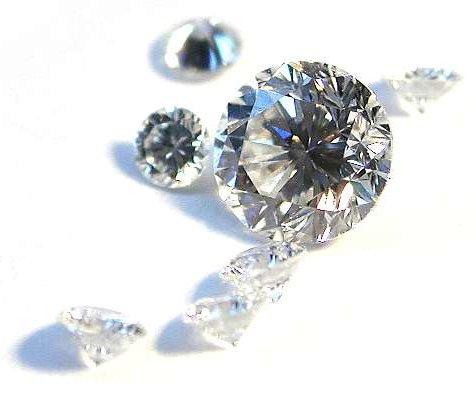
Who’s sick of the recession and its aftermath? Who wants to rebel against financial constraints by reveling in diamonds?
A lot of people, apparently. De Beers reported profits of $1 billion in 2013 as diamond demand increased by about 3 percent, and projections show demand for 2014 increasing by 4.5 percent. The U.S. and China are fueling the increase, even as prices have more than doubled in the past five years.
And while we all love a good 'ol fashioned diamond-induced trance (so sparkly!) you’ve likely heard there are um, one or two problems here and there with the diamond industry.
For one, consumers have been steadily fed a narrative that diamonds are mandatory for demonstrating love, and for reinforcing proper gender roles (man buy big diamond, man good. Girl get big diamond, girl princess). Nothing like getting a big rock instead of a down payment on a house to sweep us off our feet.
Here's a quick n' dirty – and downright delightful – history lesson of the great De Beers Diamond Hawkers:
The Great Depression created a nation of penny pinchers, and for some inexplicable reason, people didn’t realize diamonds were mandatory buys. In response, De Beers created one of the most successful and enduring marketing campaigns in history: diamonds = love. Men were told that the size of the diamond engagement ring corresponded with how much they loved their fiancée, movie stars were swathed in diamonds in the relatively new motion pictures, and the campaign culminated with the iconic 1947 tagline ..
A diamond is forever.
Consumers took the bait, (hookline and sinker) and the number of diamond engagement rings in the U.S. and other countries spiked dramatically...
By 1981, almost 60 percent of Japanese brides wore diamonds, up from 5 percent in 1967. – Business Insider
The diamond had its new place as a bona fide staple of the wedding industry where it’s been cajoling us to dish out thousands of extra dollars ever since.
And theeeeen there’s the pesky issue of diamond ethics.
As Leonardo DiCaprio taught us, many diamond mines are located in African war zones, where they serve to finance conflicts and empower god awful war lords who specialize in hacking off body parts of local populations. Industry efforts to ensure diamonds are conflict-free have been criticized as ineffectual. And even in less harrowing circumstances, diamond mining often involves deplorable working conditions, major safety concerns, and child labor.
As a result of price and ethics issues, retailers are increasingly providing diamond alternatives, but De Beer’s profits reports demonstrate the people still mostly want their diamond straight from the bowels of mother earth. And after casually trolling 18 pages of search results for "celebrity engagement rings" (and they're were plenty more than that) we're pretty sure the trend is um, here to stay.
Because if there's one thing we like more than our own diamonds, it's a bigger version on someone else. (Just not our friends thankyouverymuch.)
(Image: commons.wikimedia.org)






